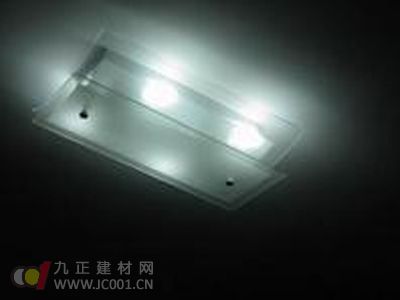Basic Knowledge of Purchasing Lamps:
Purchase Based on Needs
1. The living room is a space where guests are received, so it should create a warm and inviting atmosphere. A dignified and bright chandelier or ceiling light is ideal for this area. If the room has high ceilings, consider a large circular chandelier or an incandescent one to make the space feel more open. Avoid using only downward lighting; ensure the upper part of the room also has some illumination to balance the brightness between the top and bottom. The design and color of the lighting should match the furniture and overall interior style.
2. In the study, lighting should be both bright and soft, making incandescent bulbs a good choice. Desk lamps should be selected based on the nature of the work, such as using a direct lamp with a reflector and a lower opening. Common light sources include incandescent and fluorescent bulbs, which provide adequate illumination without being harsh.
3. Bedrooms can benefit from a combination of different lighting types. Soft and decorative lights help create a cozy and elegant environment, enhancing the overall comfort of the space.

4. For the dining area, the table should have warm and bright lighting. A pendant light directly above the table works best, while warm wall lights placed near the dining area can enhance the welcoming atmosphere.
5. In kitchens, bathrooms, and hallways, ceiling lights are typically the best option. These areas require less intense lighting, and ceiling fixtures are easier to clean, especially in places with moisture or dust. Kitchen lamps should be easy to wipe down and resistant to corrosion, while bathroom lights need to be waterproof and rust-resistant.
Safety First
When selecting lighting, safety should always come first. Check the product’s warranty and certification to ensure quality. While price isn’t everything, very cheap options may compromise on safety. Poor-quality lamps can pose serious risks, such as electrical fires, which can be dangerous and costly.
1. Pay attention to electrical safety. Many lighting issues arise from poor insulation or improper protection against electric shock. Make sure the lamp has proper covers and meets safety standards to prevent accidental contact with live parts.
2. Check the wire gauge used in the lamp. Look for a minimum cross-sectional area of 0.5mm². Some manufacturers use thinner wires (like 0.2mm²) to cut costs, which can lead to overheating and potential short circuits.
3. Consider the quality of internal components, such as ballasts. If the lamp uses an electronic ballast, choose one with built-in protection features. High-quality ballasts, like those rated at TW130, offer better heat resistance and longer lifespan, especially in poorly ventilated spaces.
Style Matters
Lighting should complement your home's interior style. The color, shape, and design of the fixture should match the decor and furniture. Flashy or overly complicated lighting can look out of place rather than enhance the space. You can still choose colors that reflect your personal taste, but it’s important to keep them in harmony with the overall design.
The size, number, and type of lighting should also match the room’s dimensions, ceiling height, and layout. Too many or too few lights can disrupt the balance of the space.
Finally, when purchasing lighting, consider your budget. Choose what you can afford and prioritize quality over unnecessary luxury. Lighting is not just about function—it also contributes to the aesthetics and comfort of your home.
Hot Tub Spa
Hot Tub Spa,jacuzzi hot tubs,hotspring hot tub,hot tub pool,in ground hot tub
Guangzhou Aijingsi Sanitary Products Co.,Ltd , https://www.infinityedgehottub.com